These Design Cues We Spotted in Frieze Week's Coolest Projects Might Just Be Your Shortcut to a Home That Feels Like Art
Lifestyle editor Gilda Bruno reports back from the trenches of Frieze London, PAD, and a handful of collateral events to capture the creative moments worth stealing
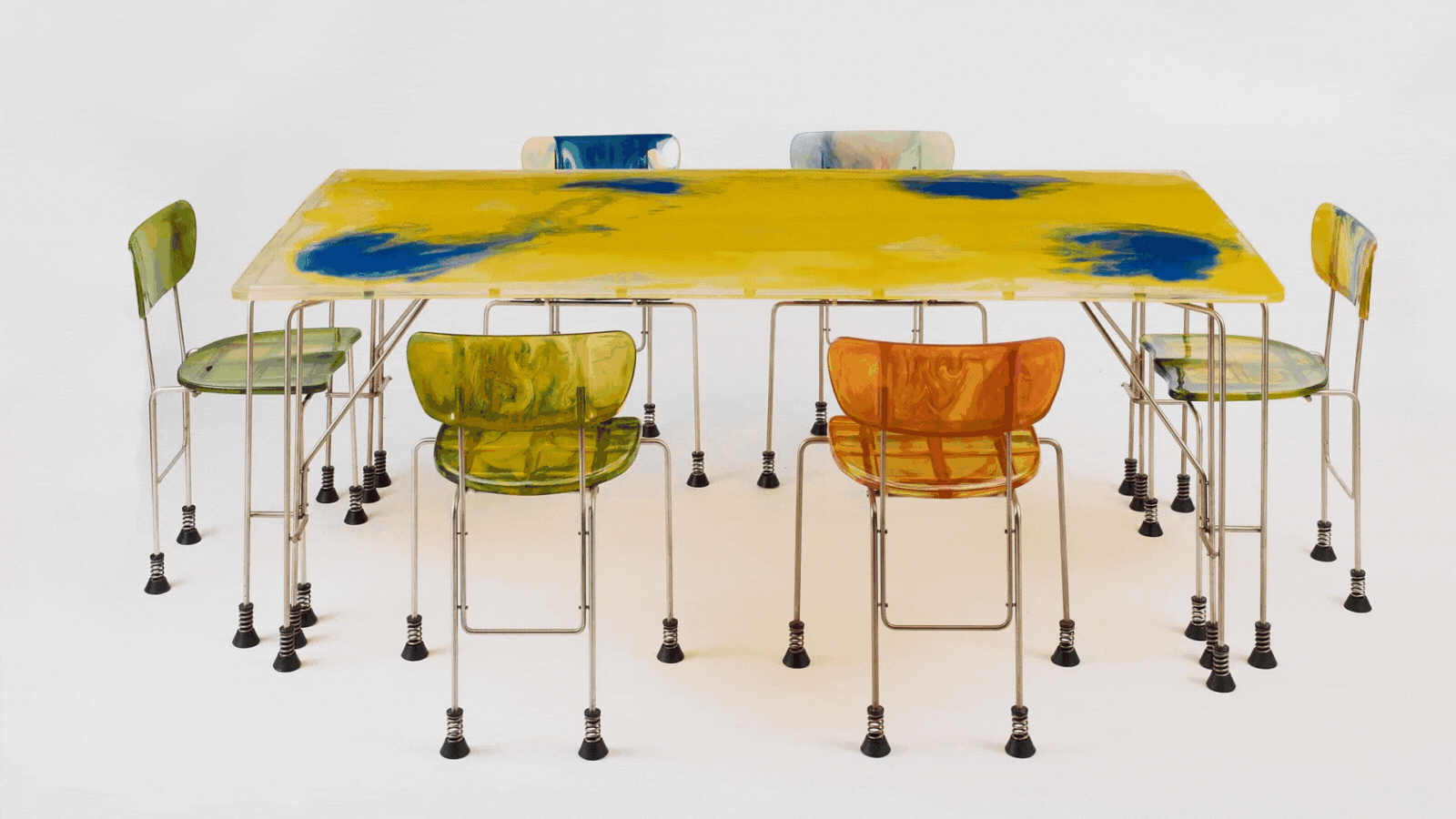
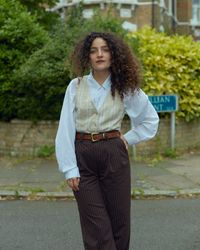
For die-hard or aspiring arts connoisseurs, Frieze London and Frieze Masters are two of the most anticipated events on the cultural agenda, gathering thousands of visitors from every corner of the world to take stock of the state of creativity between past, present, and future.
While that's undoubtedly true for us, October in London and, particularly, Frieze Week, isn't just the perfect moment to catch up on some of the most captivating art and design exhibitions in London. It is also a time to explore how painting, sculpture, video, and installation can quietly reshape the domestic environment, too, by prompting us to reconsider how we interact with, decorate, and experience the most intimate of spaces around us, whether directly or indirectly. And what better way to do so than by coming face to face with the experimentation of today's leading and burgeoning artistic talents?
With 168 galleries from over 40 countries taking part in Frieze London, the contemporary wing of Frieze fairs, and an additional cohort of some 120 platforms represented at its historical and modern sibling showcase, Frieze Masters, at The Regent's Park for the rest of this week (through October 19), The Big Smoke is once again ready to serve as the litmus test for any aesthetic and interior design trends set to define the year ahead. That's why we have spent the past 48 hours rushing about town to attend the previews of both Frieze and the coinciding premier design fair, PAD London, along with a selected series of solo gallery exhibitions, exclusive collaborations, and more: to bring you a curated edit of standout moments worth drawing inspiration from for your home.
Make note of our trusted culture insiders' favorite food and drink spots in London, stock up on energy, and let's go: these are the ten Frieze Week projects we will be looking back to while crafting a liveable masterpiece of our own — and what they implicitly got us thinking about decor.
Frieze London — Is Art That Imitates Life (That Imitates Art) the Chicest Buy for a Contemporary House?
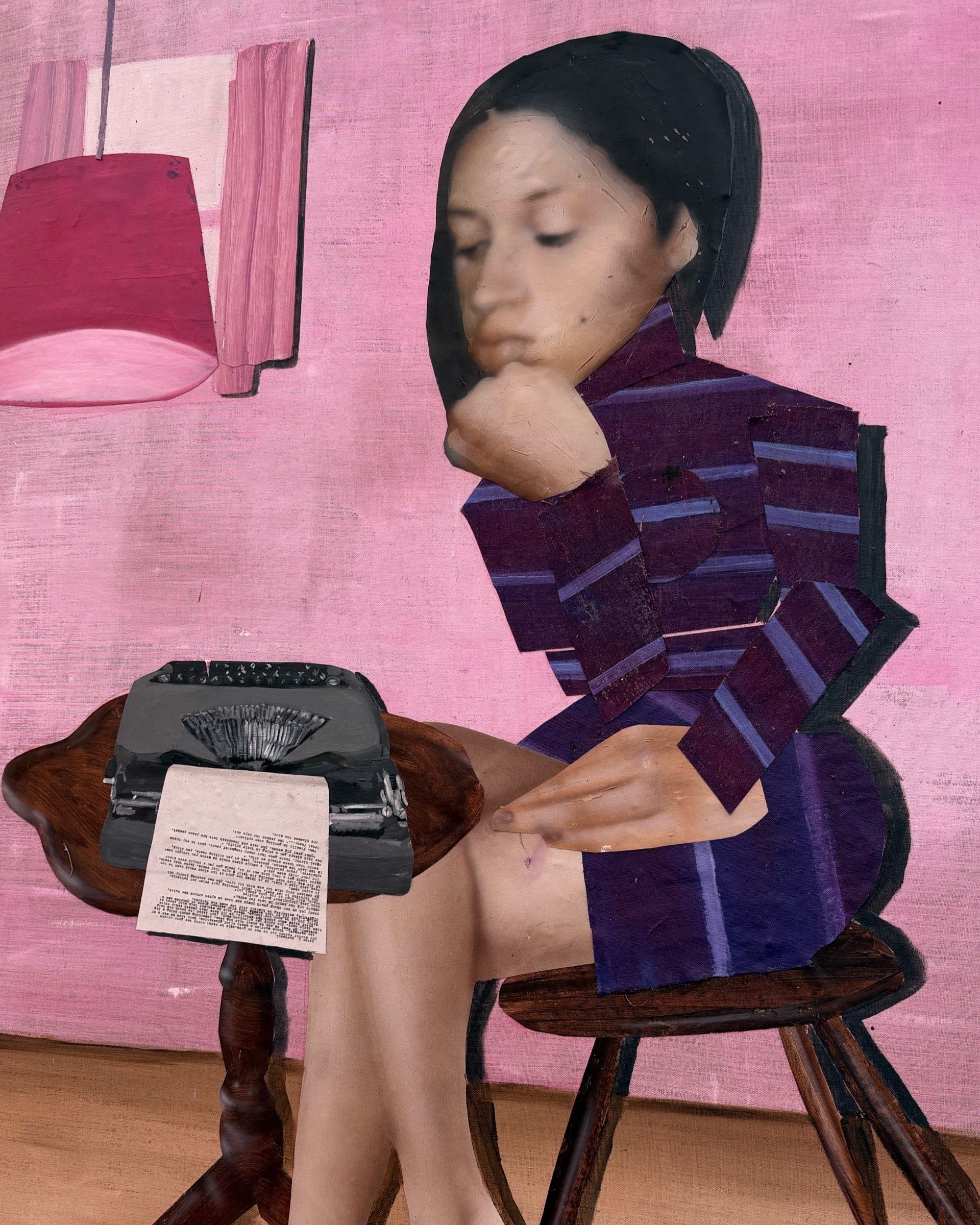
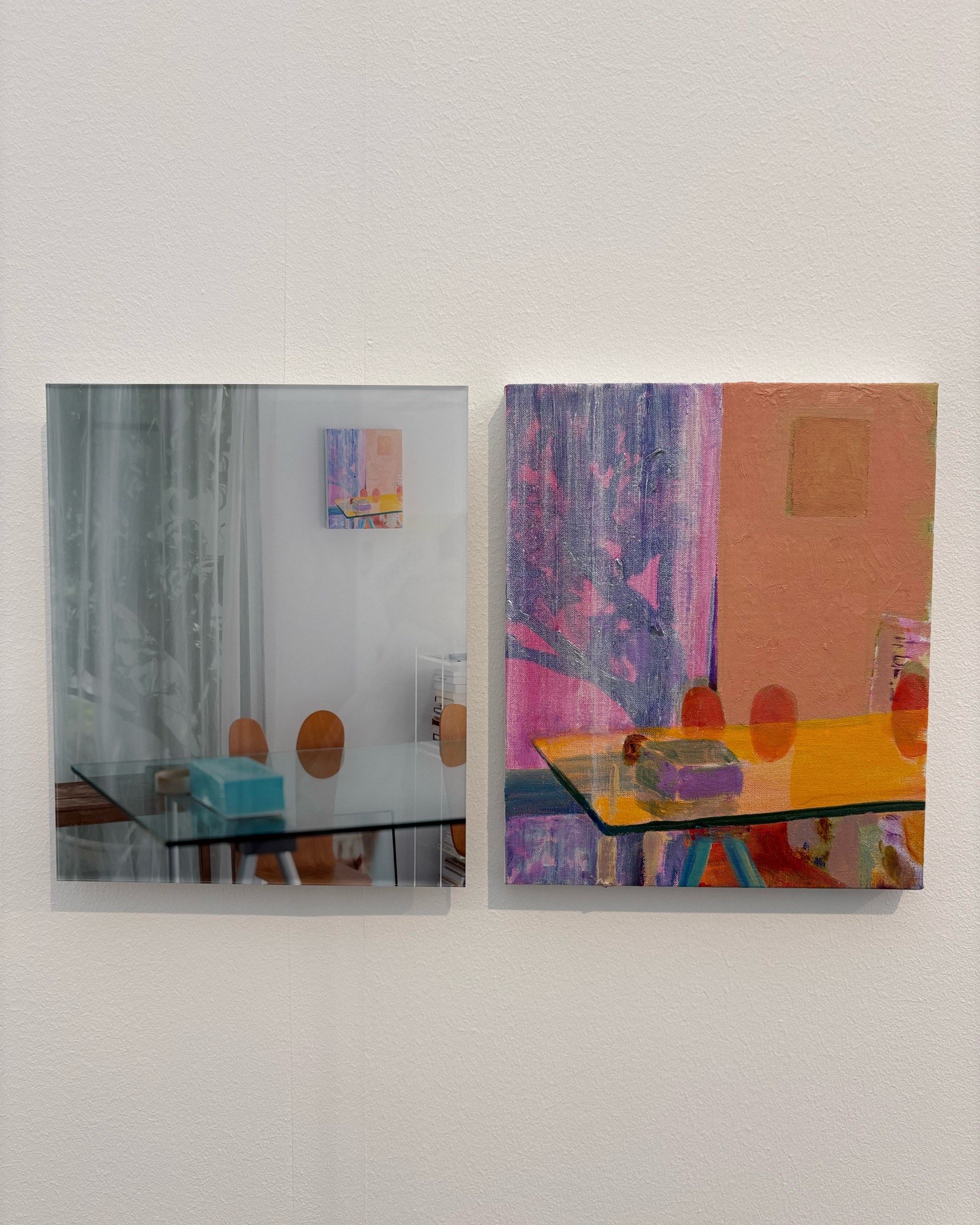
Coordinating wall art in a room so as to curate your favorite masterpieces properly while ensuring each piece in your collection feels cohesive is a hard enough job, but you know what's even harder when living in a contemporary home (or apartment)? Finding artworks that are a. aesthetically striking and b. culturally relevant without c. compromising the overall look and feel of your base. When I visited the preview of Frieze London yesterday, I quickly began to notice a number of canvases and photographs that paint the home as their main stage, some of which even incorporate more domestic scenes as artworks in the portrayed display, like in a loophole, or in a 'meta'-artwork (see Yutaka Nozawa's contributions to gallery KAYOKOYUKI's two-person Focus presentation or Toby Grant aka Cato's canvases for Harlesden High Street's one above to get a sense of it all).
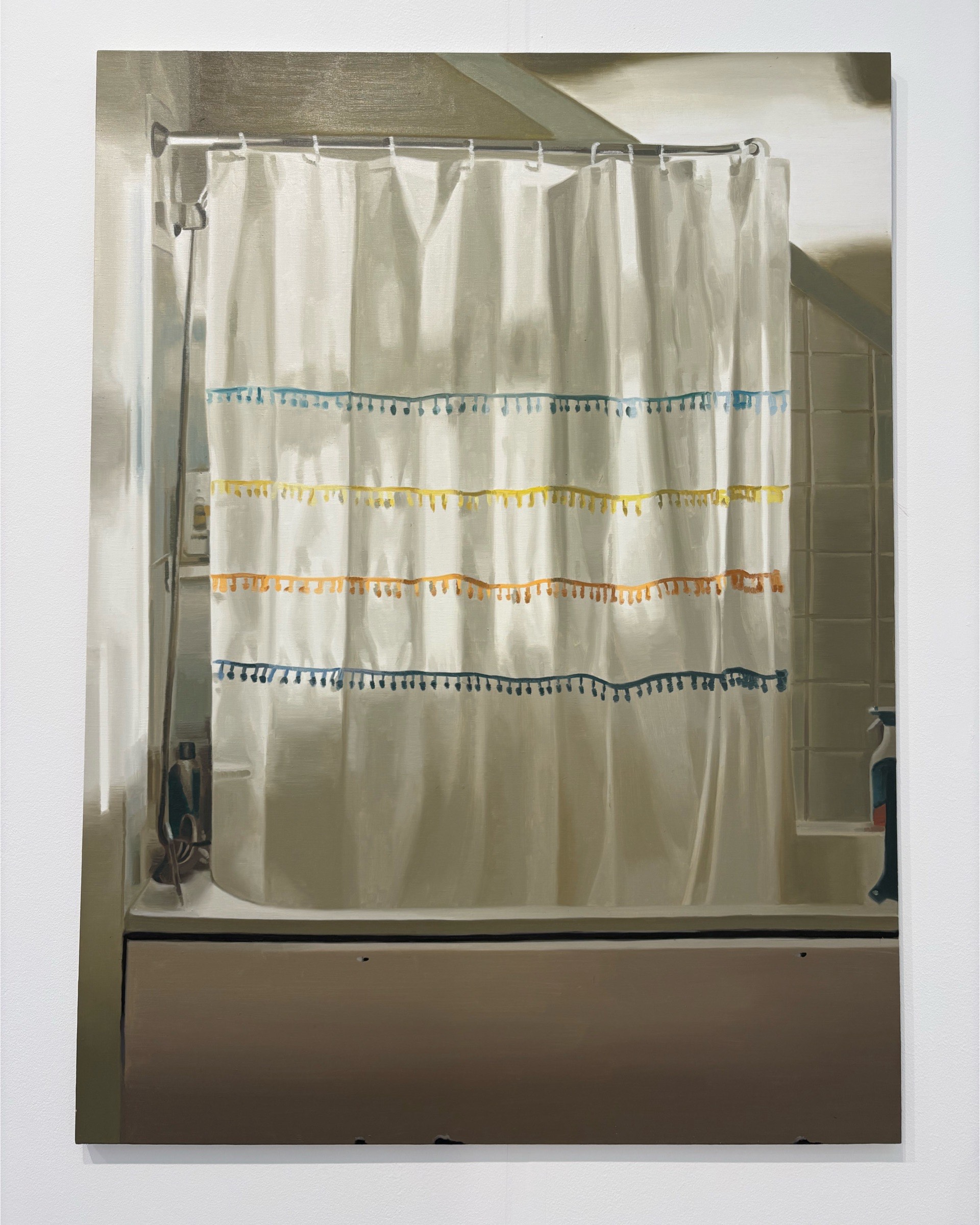
Mike Silva's "Bathroom Light" (2024), as seen in the Frieze London booth of local gallery The approach.
Ordinary moments like sipping coffee at a dining table or reading and typing away in your living room suddenly acquire brand new meaning and allure when framed artistically. Compared to abstract compositions, which risk coming off as dry or even pretentious, or more dated, historical creative expressions, art that puts the everyday center and front is not only the type you won't get tired of, but also the one you'll look forward to coming back to after spending a few days away from home. Standing out for their vibrancy and their emotional way of rendering such an intimate space while retaining a sense of suspense, of mystery, creations like these solve the dilemma while infusing your rooms with a one-of-a-kind, quirky twist.
Danielle Fretwell: Tablescapes at Alice Amati — Is Your Dining Table Still Life-Worthy?
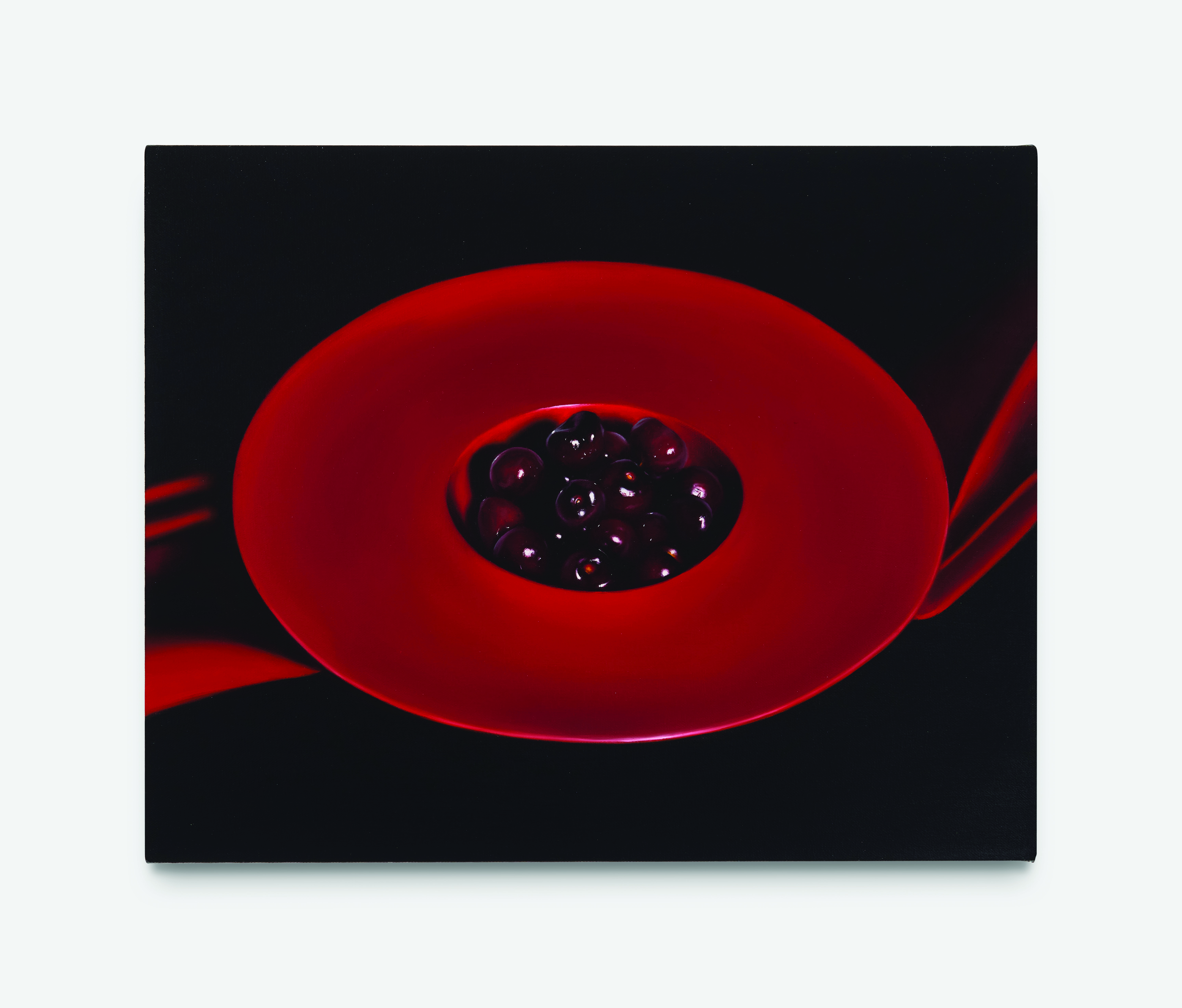
Danielle Fretwell's "Orbital (sweet cherries)" (2025), one of the oil on canvas artworks currently on view at Alice Amati as part of the artist's "Tablescapes" solo presentation.
The Livingetc newsletters are your inside source for what’s shaping interiors now - and what’s next. Discover trend forecasts, smart style ideas, and curated shopping inspiration that brings design to life. Subscribe today and stay ahead of the curve.
Food isn't just food, cocktails aren't just cocktails in American artist Danielle Fretwell's second solo exhibition at Alice Amati, Tablescapes. An hypnotic collection of still life canvases with uncannily rendered shiny tea cups, serving silver trays, filled-with-fruit plates, candles, and softly glowing candles and lamps as their protagonists, the showcase feels almost didascalic in its title. But in a way, it is the literal description of the paintings contained within it that prompts you to wonder whether, actually, there is more to the show than the eye can see. If Fretwell's ability to portray everyday settings and objects so realistically is in itself impressive, the ease with which she infuses an air of unresolved mystery into each artwork is her ultimate gift.
Dinnerware, it seems, holds stories we barely acknowledge, as do the tables it sits on, which gives us even more of a reason to curate both in our home. From the artist's evocative showcase we love (and steal): color-blocked, lacquered tabletops in colors like blue, red, and forest green; antique silverware reframed in flawless, minimal contexts like in her crab-starring Superiority canvas; and the space age-y, sculptural dishes at the center of her Orbital (sweet cherries) (2025) and Orbital (cocktail olives) (2025), particularly in chrome.
PAD London and Beyond — Has Your Design Vision Got, Ehm, Legs?
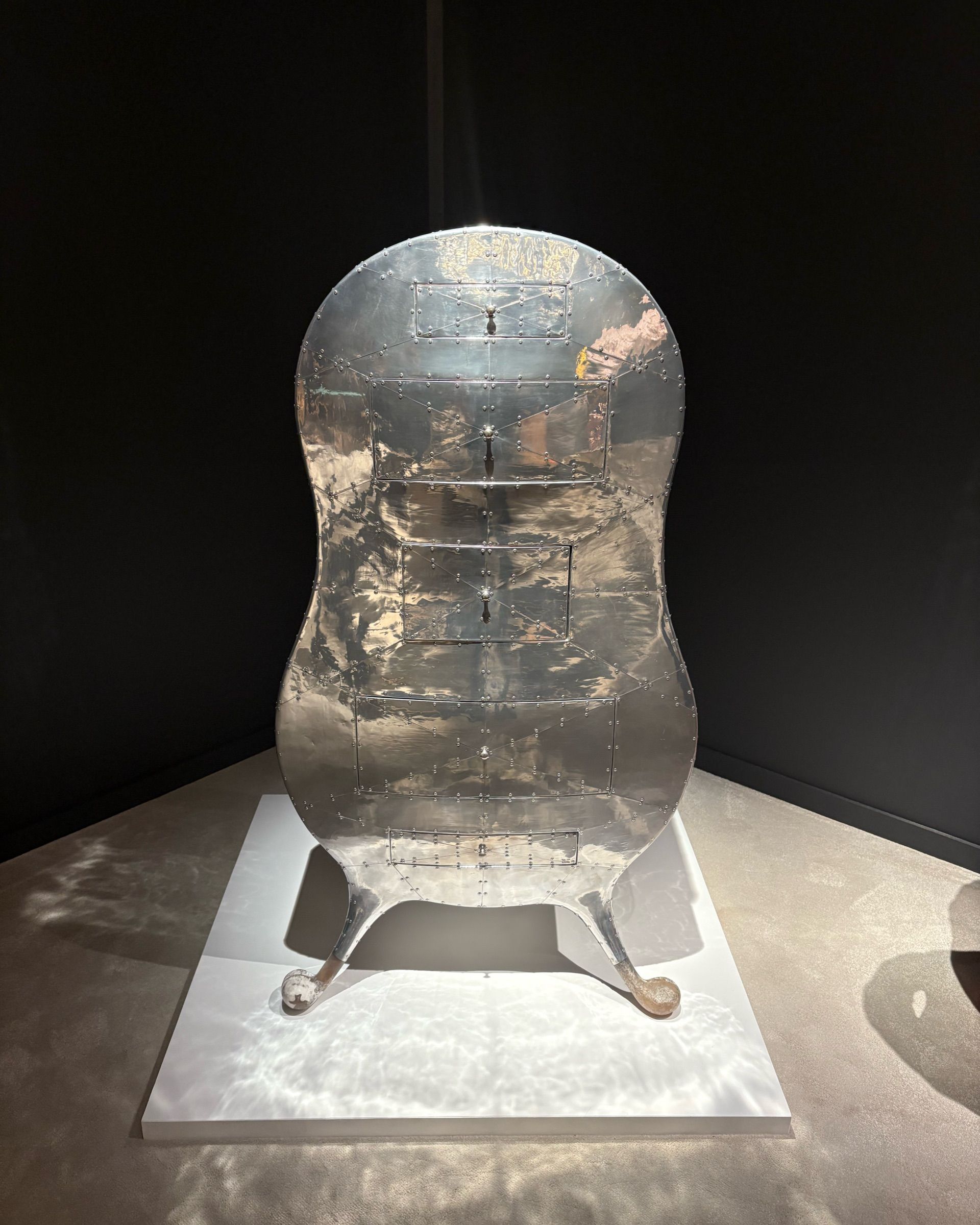
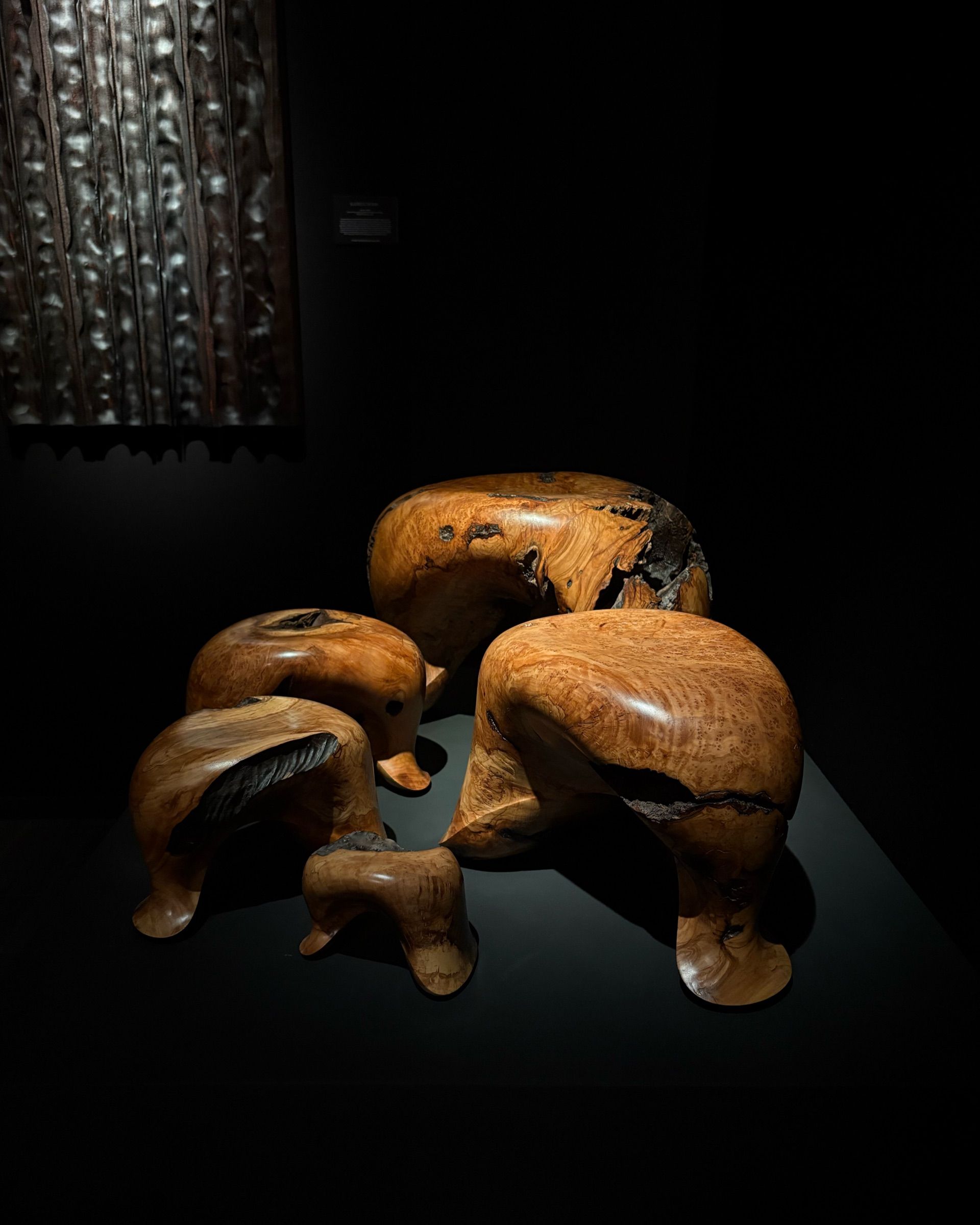
With 67 international exhibitors converging on Mayfair's Berkeley Square from across the globe for the 17th edition of PAD London, which inaugurated on Tuesday, October 14, and continues through Sunday, it can be hard to know where to start. This year's event, which counts 11 newcomers, certainly doesn't lack inventiveness, with much of the wit coming from first-timers like Beirut's PIK'D, which brings a whimsical presentation of sea urchin-like, textural ceramics and spectacularly blown, floral glass arrangements, and Dubai's Booroom Gallery, whose booth centers Ksenia Breivo's ice-looking, blooming sculptural tables and vases, José Zanine Caldas' totemic wooden forms, and quartz-like organics sconces, as well as floor lamps by Russian architect Ariana Ahmad.
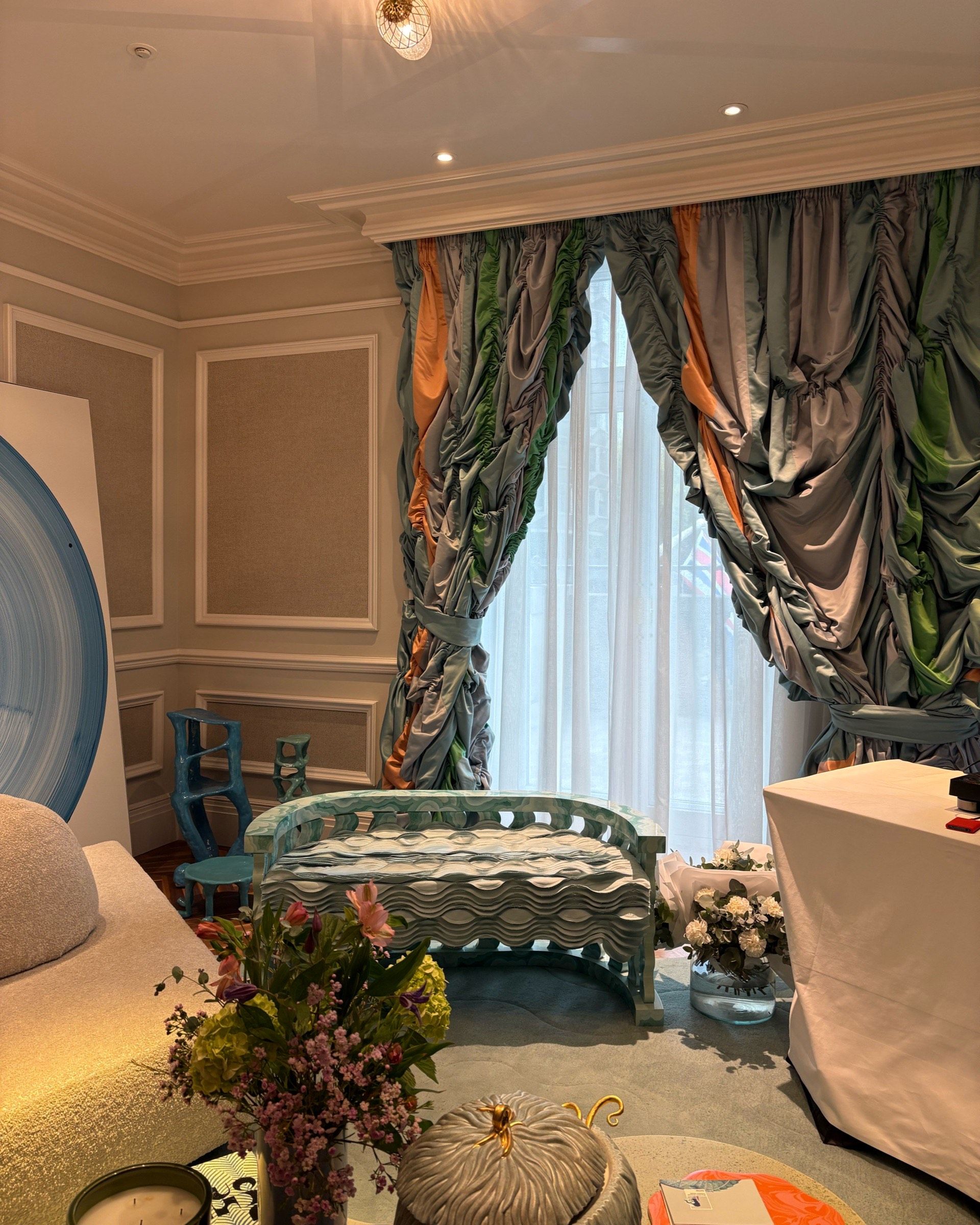
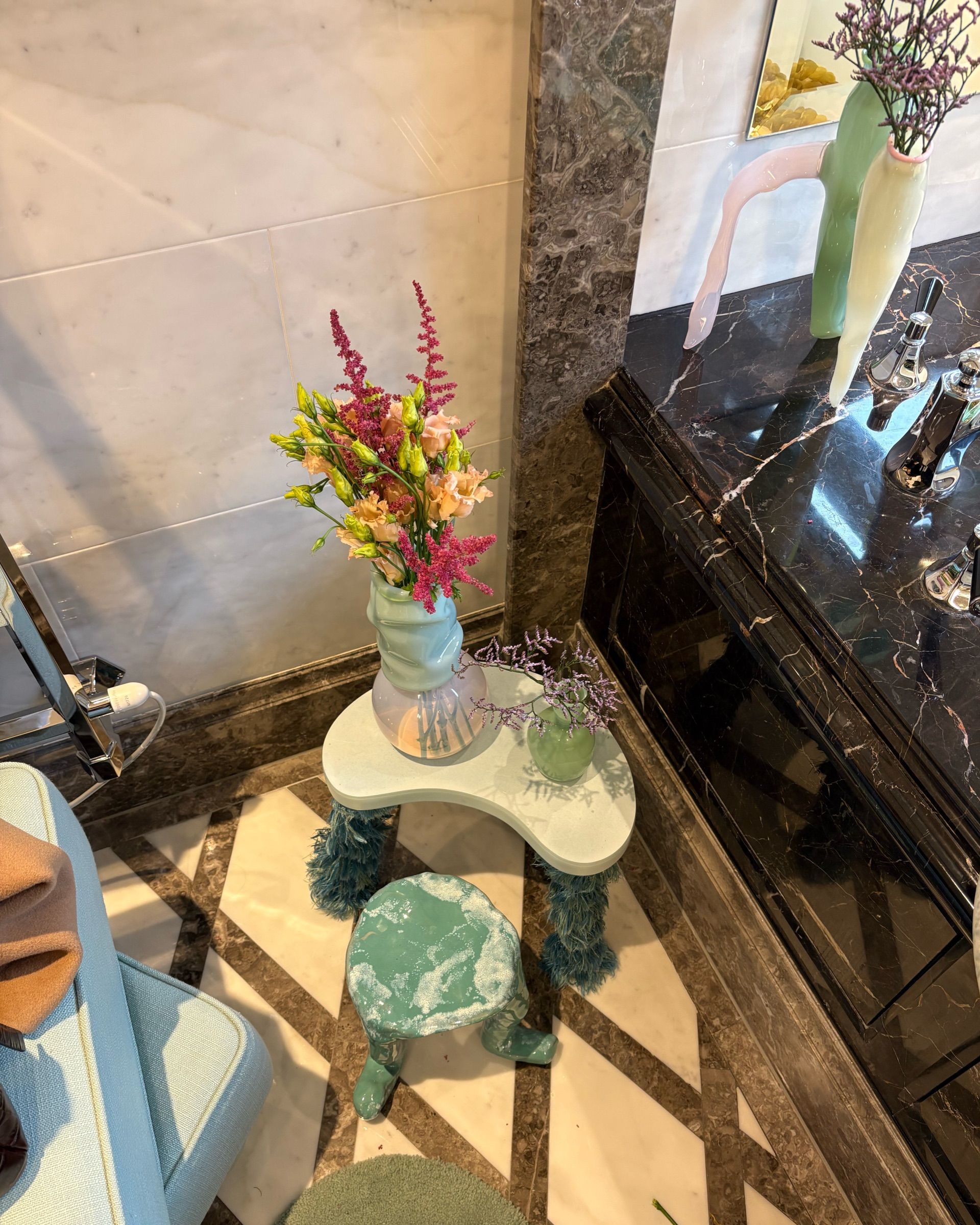
To catch my attention amid all the hustle and bustle, though, and not even exclusively inside of PAD London itself, but also at collateral events, was the tendency of certain designers to give their furniture a fantastical silhouette complete with amusing, creaturesque legs. From Marc Newson's beaten aluminium piece, Pod of Drawers, part of this year's Carpenters Workshop Gallery's setup (B19) at the fair, positioned opposite Spanish artist Nacho Carbonell's vaguely bear-reminiscent, human-scale functional sculpture Back to Back Cabinet, and Aldo Bakker's Tonus (Olive Family) (2022), a wood-carved series of varying-in-size-and-shape (or age?) stools at Sarah Myerscough Gallery (B27) to a number of footed, lacquered coffee tables and baskets starring as fanciful additions to the Uchronia-designed Pantone Celadon Suite, an exclusive activation unveiled at Mandarin Oriental Hyde Park right on time for Frieze Week, London is calling it: this year homeware is going whimsical.
Read more about Carpenters Workshop Gallery, Sarah Myerscough Gallery, and Uchronia.
PAD London — Stitching, Piecing, Patchworking: Is 'Jigsaw' Furniture the Latest Trend in Decor?
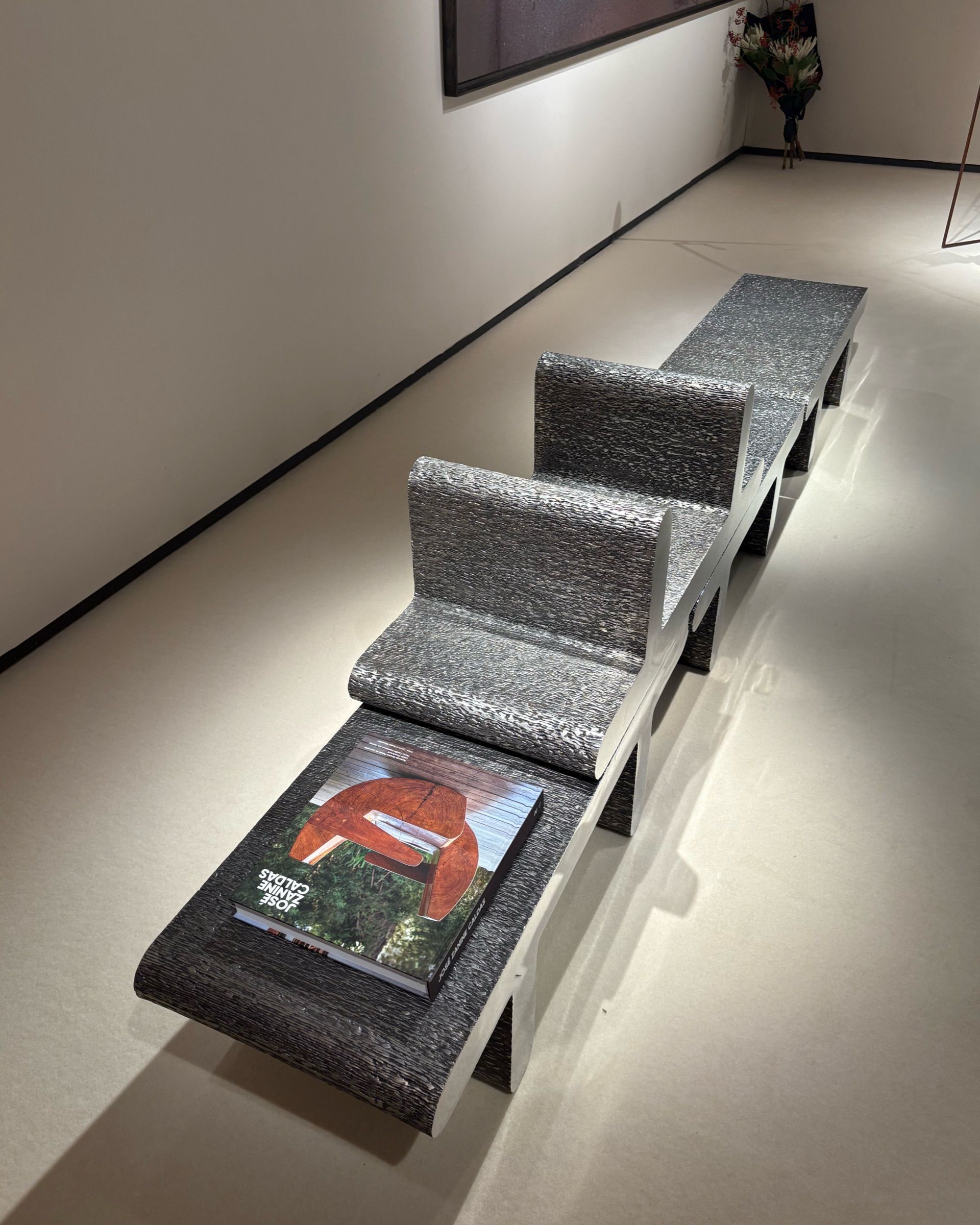
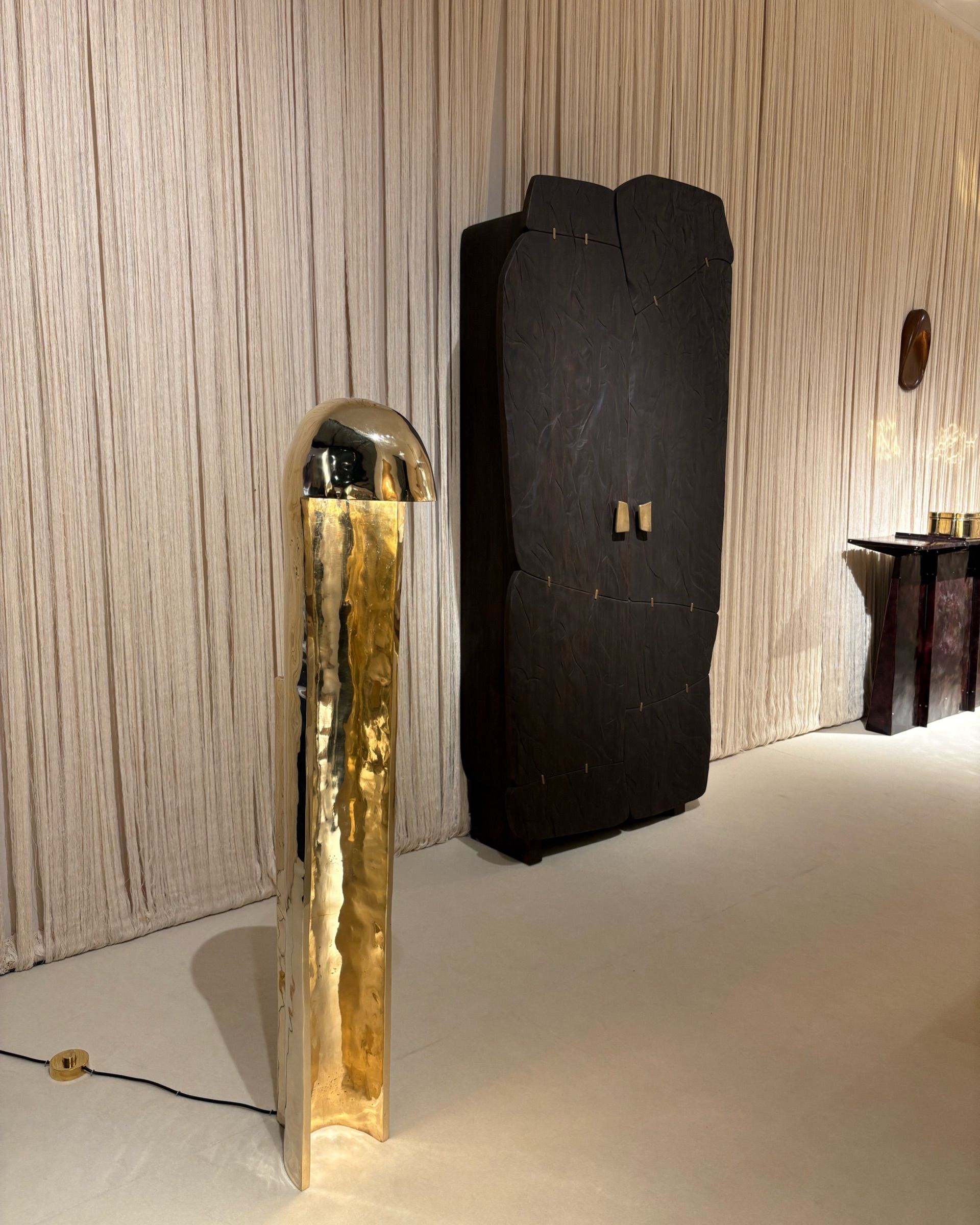
Between Frieze London (and Frieze Masters), PAD London, and the plethora of pop-up exhibitions and collection launches currently taking over the British capital, it is easy to lose sight of highlights. Luckily, though, some of my personal favorites made it hard for you not to see them — and brought the fun and the unexpected back into the design realm. I am talking about the visually 'pieced-up', stitched, or full-on Tetris-like furniture pieces I have come across while searching for standouts at PAD London.
These include some of the cabinet and lighting models of Dutch designer Linde Freya Tangelder's wood and metal SLABS collection, where seemingly individual fragments are 'woven' together through visible stitches, presented by Mumbai gallery Æquō (A6). Charles Kalpakian's essentially beautiful Castle collection for Booroom Gallery (B25), where soft and straight lines meet and blur into minimal, pastel-shaded collectible designs like in a puzzle of sorts. And in the crafty steel creations of Lena Solovyeva and her Objects / Modules series, where the same modular bench motif is repeated into countless different combinations that, like in a game of Tetris, are made possible by the alternating of empty and full shapes.
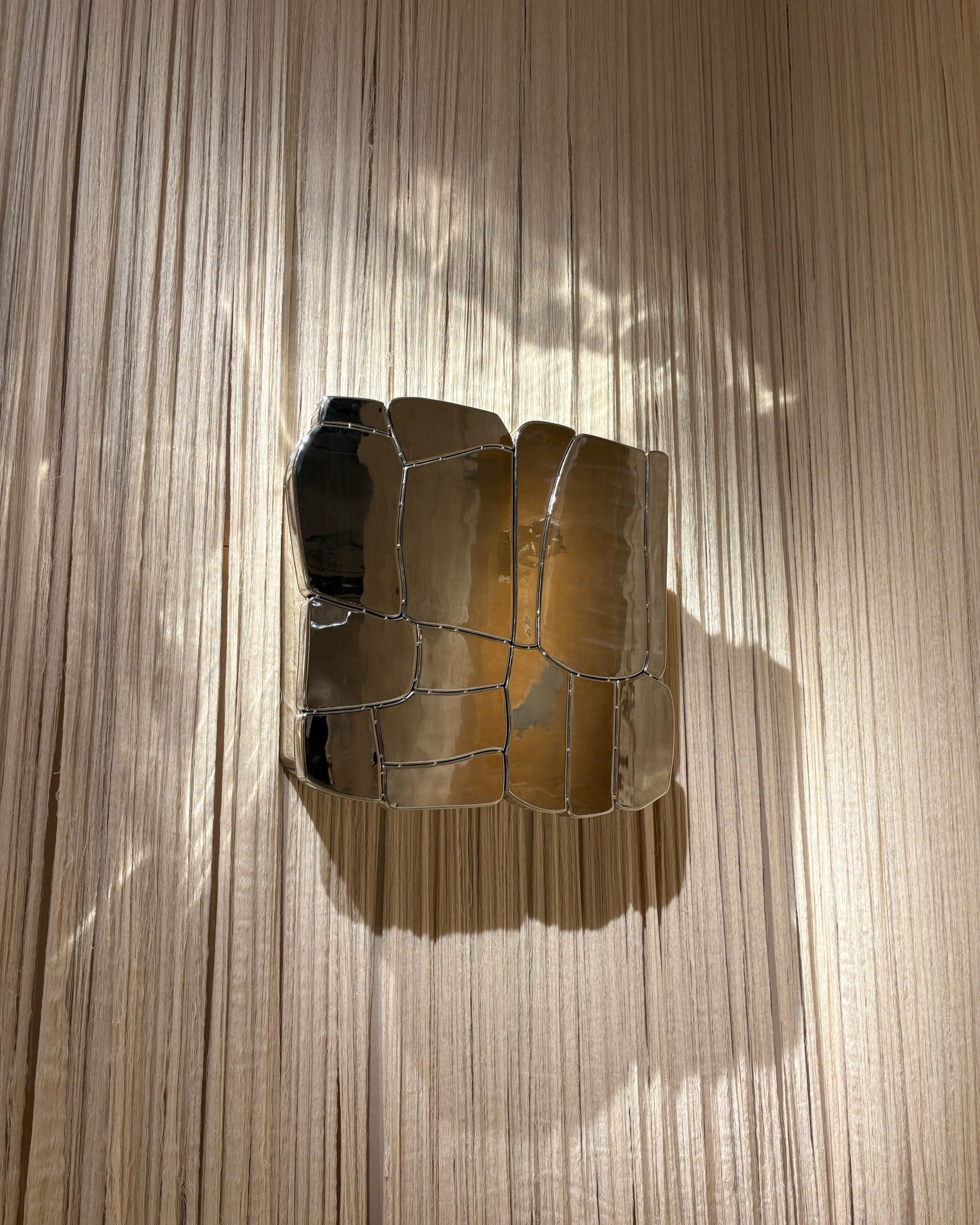
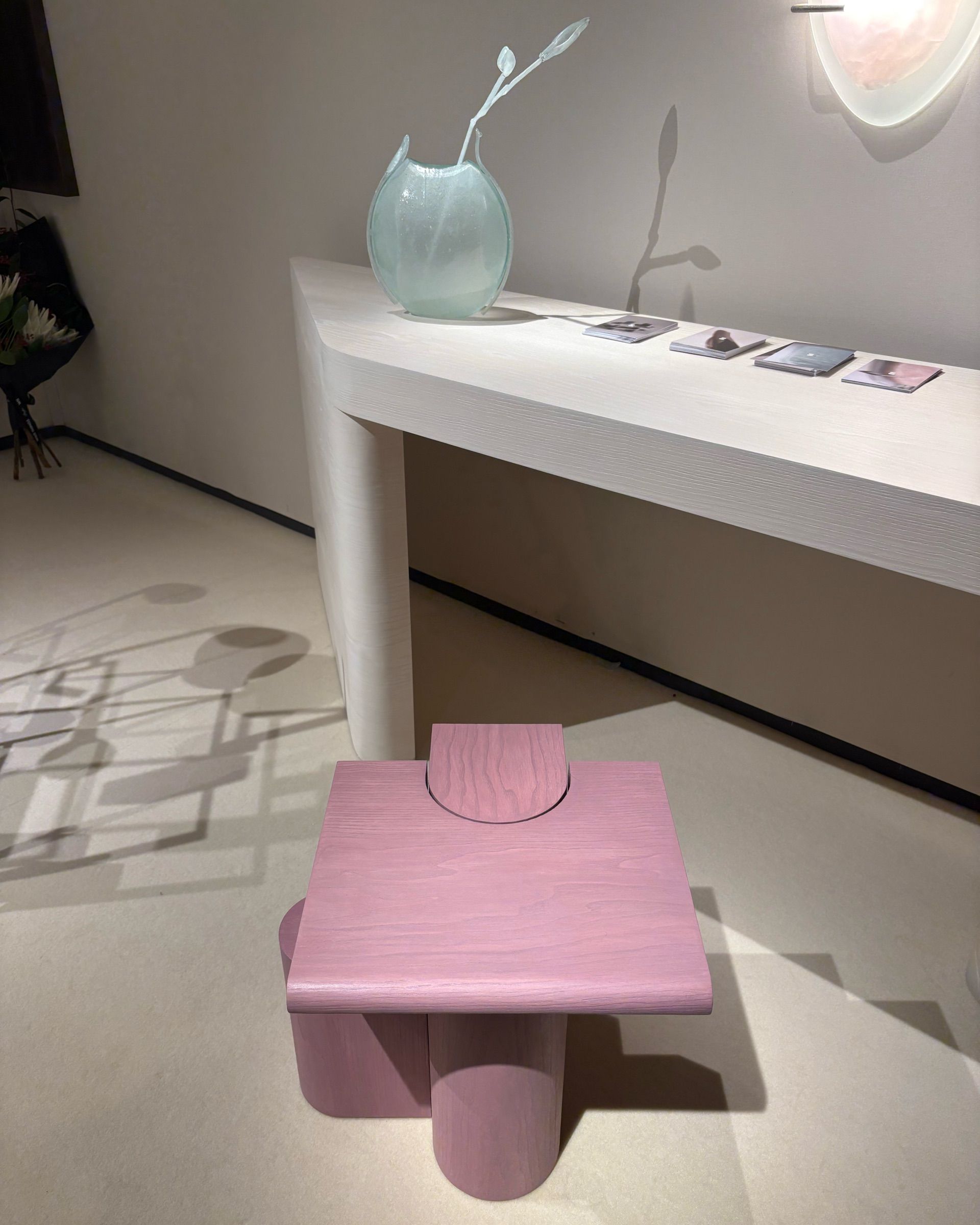
So what's the fuss? Functional, yet aesthetically unique homewares like the ones listed above prove that, in an era of non-stop visual stimulation and excess, all it takes to make a statement is attention to detail, the right choice of materials, and an ability to turn even the most linear of furniture items into an opportunity for play. Rather than settling for striking patterns and palettes to reclaim attention, these designs' monochromatic surfaces, their 'fractured' textures, or, in the case of Lena Soloyeva's benches, re-assemblable structures, demystify the interior space, transforming it into a platform for storytelling to take center stage while keeping away from fleeting trends.
Take a Seat at Harvey Nichols — Are Chairs For More Than Just Sitting?
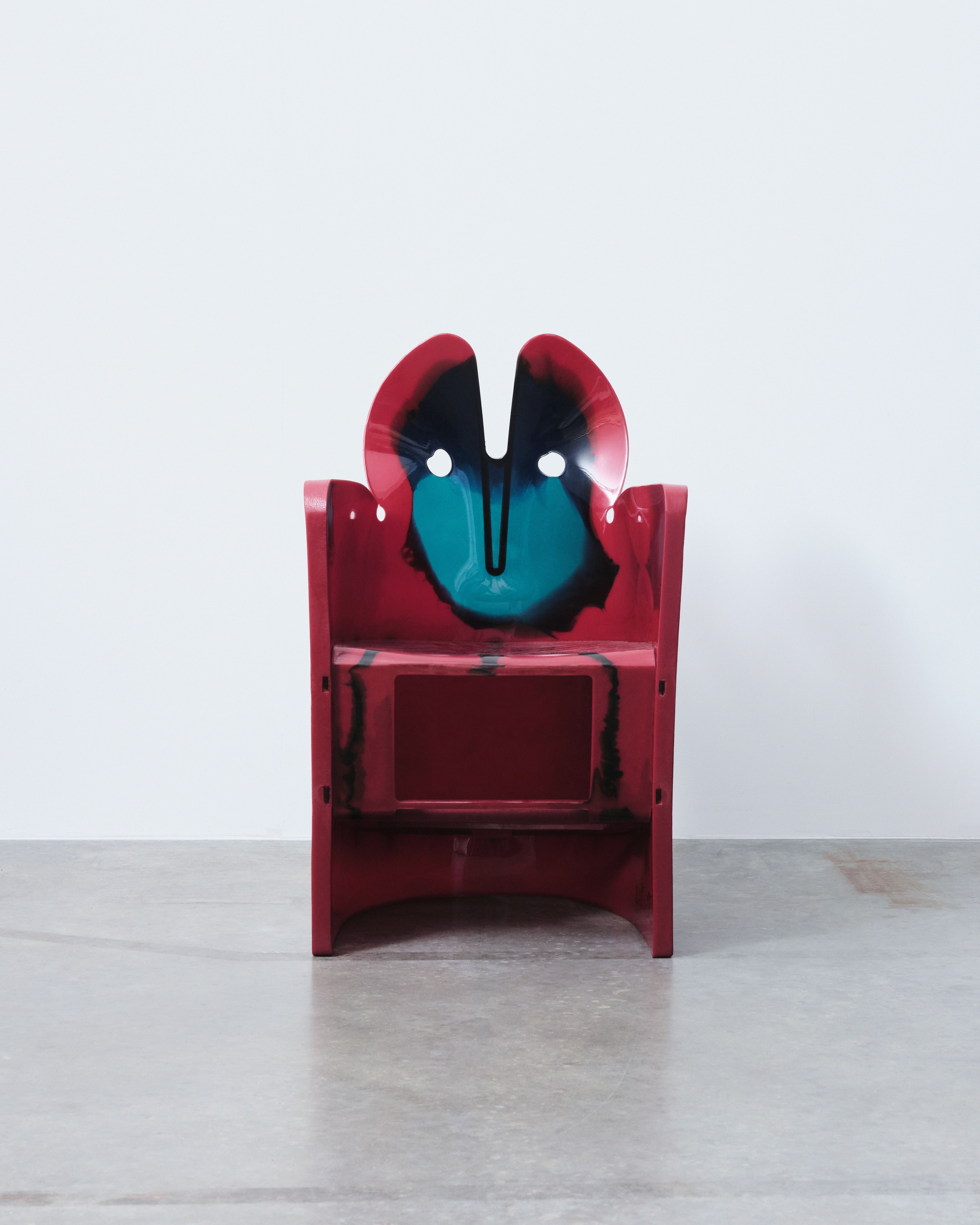
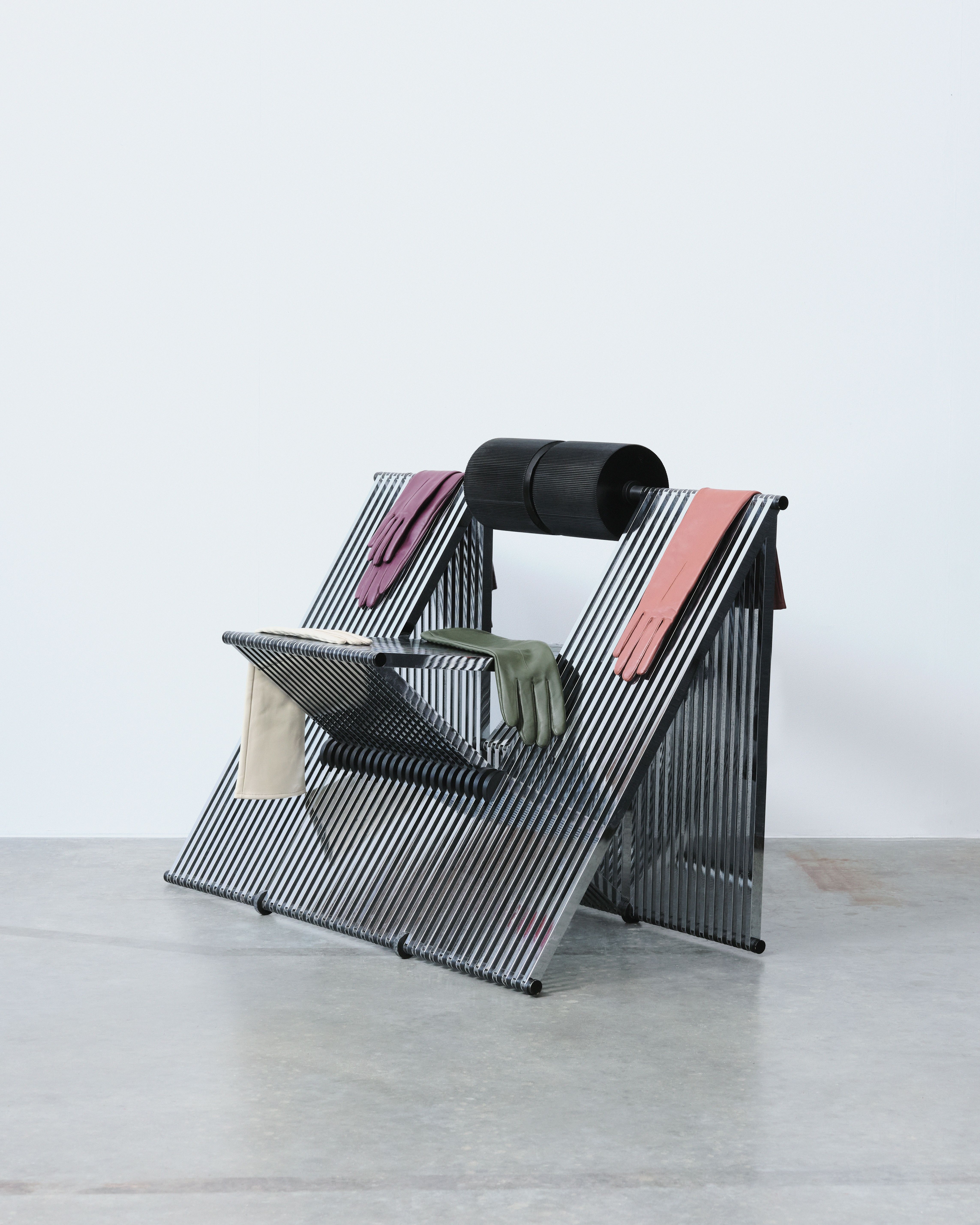
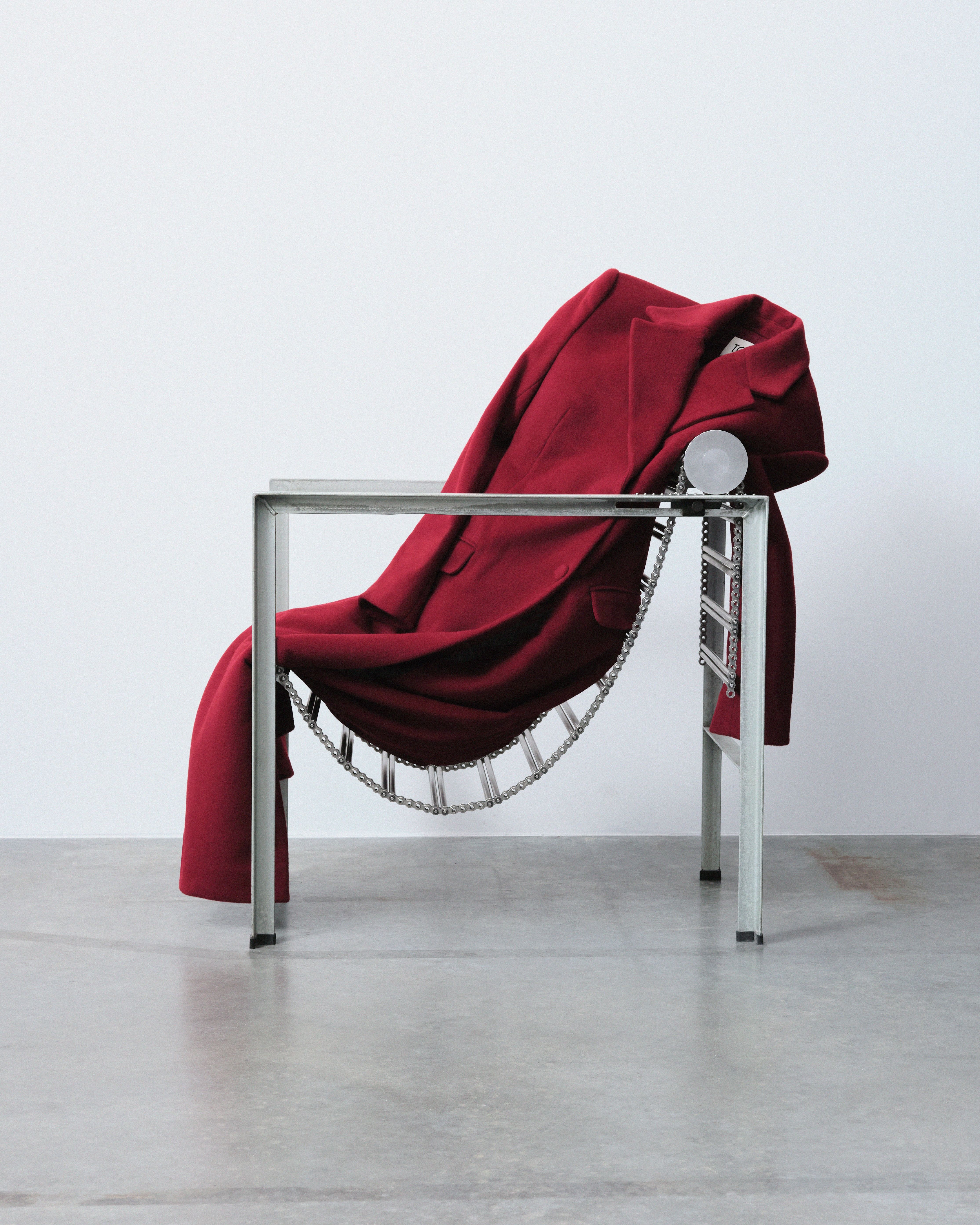
109-125 Knightsbridge, London SW1X 7RJ
Stepping inside Harvey Nichols's recently unveiled, new multifunctional concept space, 125, will be enough for you to know the above dilemma is pure rhethoric. In Brigitta Spinocchia Freund's collaboration with the Knightsbridge department store, Take a Seat, viewers are surrounded by some of the most iconic chairs in history, from amusingly whimsical designs by the late Italian artist and designer Gaetano Pesce and chrome-sculpted pieces from equally pioneering peers like Mario Botta and Paolo Pallucco & Mireille Rivier to the essentially beautiful, mid-century Kangourou Armchair by Jean Prouvé, Alvar Aalto's wavy Small Paimio, and Maria Pergay's girlish Ribbon Chair.
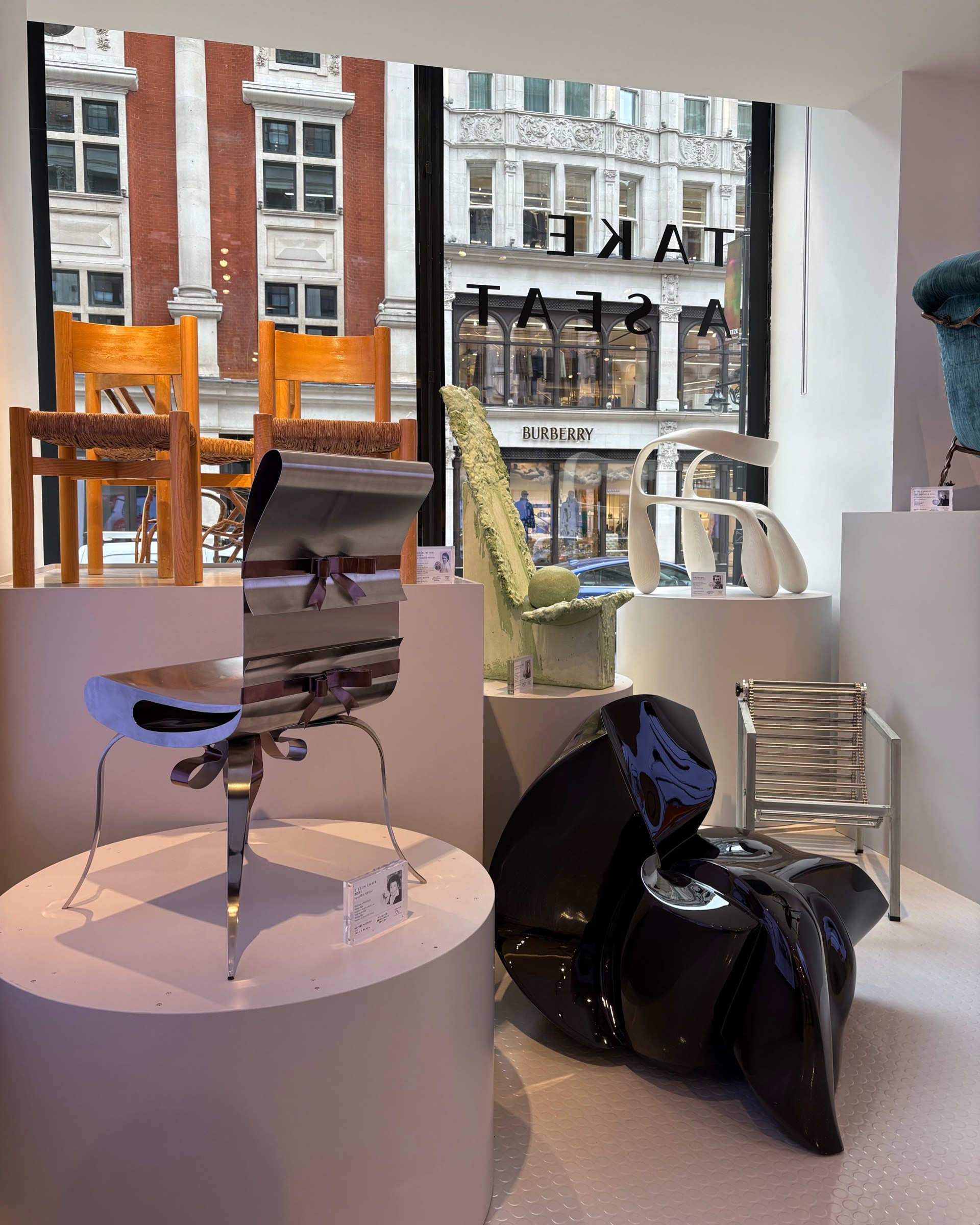
A closer look at "Take a Seat", the Brigitta Spinocchia Freund-designed design chair installation inaugurated at Harvey Nichols's newly revamped 125 space in collaboration with PAD London, coinciding with Frieze Week.
Developed on the occasion of PAD London 2025, Take a Seat captures the relevance of chairs beyond their functional nature, inviting passersby to rediscover them as a reflection into life, its ever-shifting needs, and the evolution of our sensory and aesthetic sensibilities. As Spinocchia Freund herself notes, "chairs are among the most expressive and intimate forms of design. They hold the human body, but they also hold stories about materials, makers, and moments in time." As such, the presentation doesn't simply present viewers with a comprehensive overview of some of the most influential furniture pieces in modern and contemporary history, but it simultaneously seeks to predict the future of the item, too, through its integrated Makers Wishing Wall — an opportunity to familiarize yourself with the work of the UK's creatives and makers of tomorrow.
Read more about Brigitta Spinocchia Freund's interdisciplinary design studio.
Frieze London and PAD London — Could Decor Be the Message?
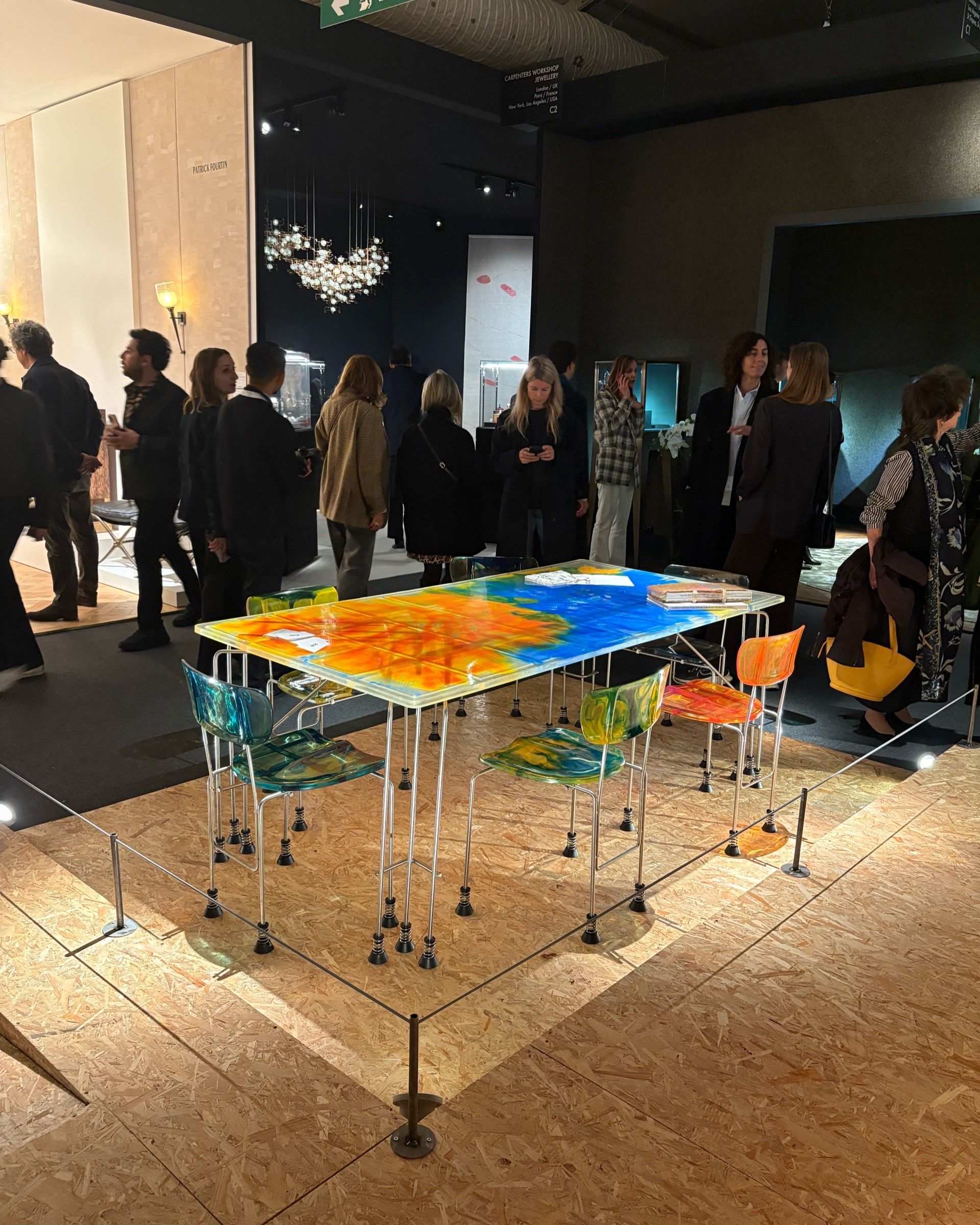
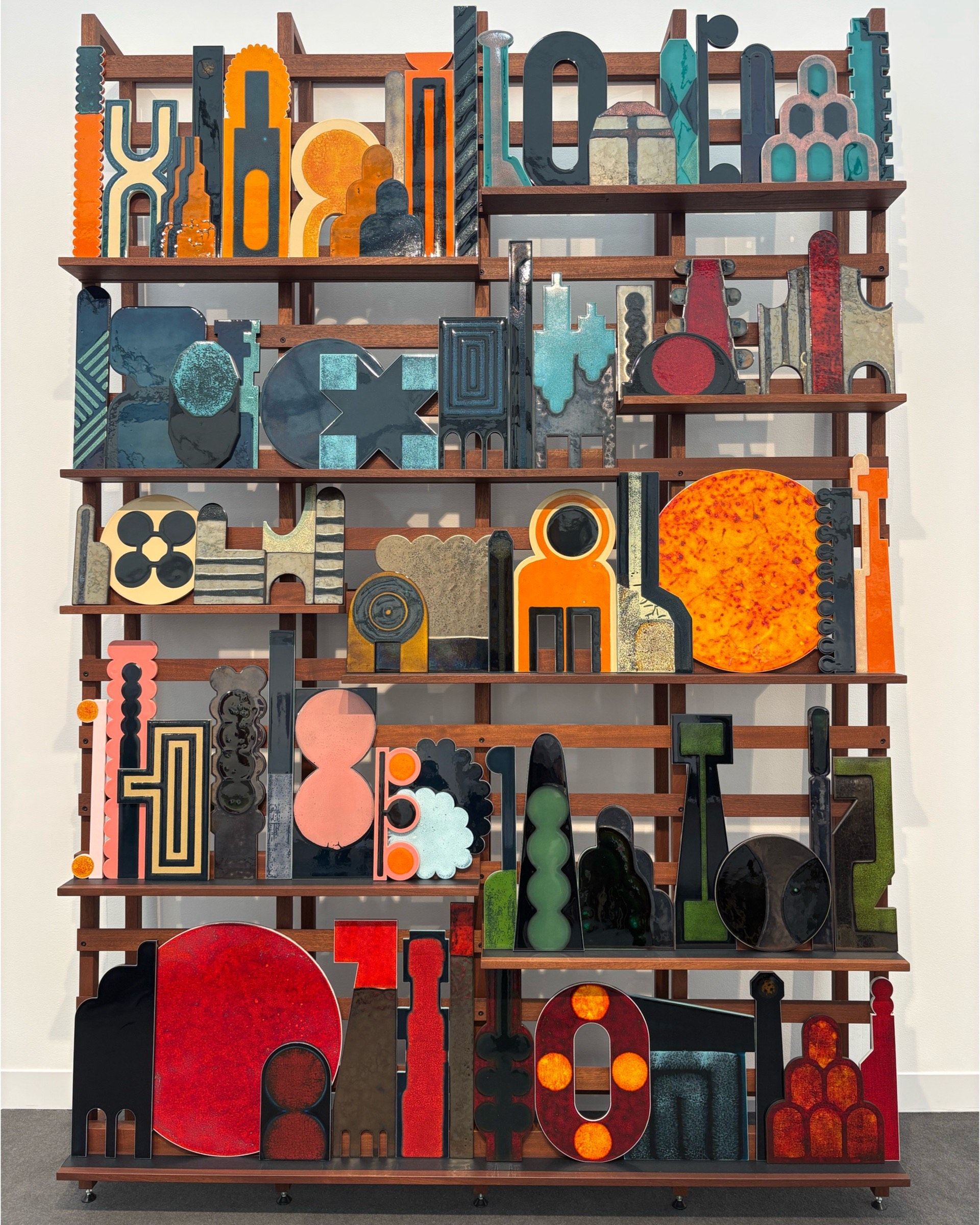
Showcases like Pulp Galerie's Gaetano Pesce retrospectives at PAD London (C15) and Lubna Chowdhary's new Assembly ceramic installation at the Frieze London presentation of Mumbai-based gallery Jhaveri Contemporary, which considers "the relationships between architecture, anthropology, and design as a means of exploring cross-cultural identities" through the painted, sculptural, and photographic works of nine artists, prove how much both functional and purely aesthetic pieces, from colorful dining tables to intricate ceramic tapestries, can become vehicle for meaning existing beyond their eye-catching appearance.
If the production of the pioneering Italian architect and designer, who passed away last year, attempted to recast tradition through resin, polyurethane, and silicone, materials that allowed him to inject a playfulness and flexibility into homeware, thus rejecting its historical rigidity, Chowdhary embraces her craft as a means to connect her British and Pakistani heritage. Within this context, her colossal wall of color, echoing the intricatedness of the Middle Eastern and Asian architectural canons in its stacked components, and masterpieces like Pesce's 931 table and 928 chairs (1993) come to embody the ability of objects to not only attract us visually, but to significantly alter our perception of the environment around us, the stories that compose it, and the function of art and furniture as a whole.
Architects for the Birds at Christie's King Street — Is Your Birdhouse Cool Enough?
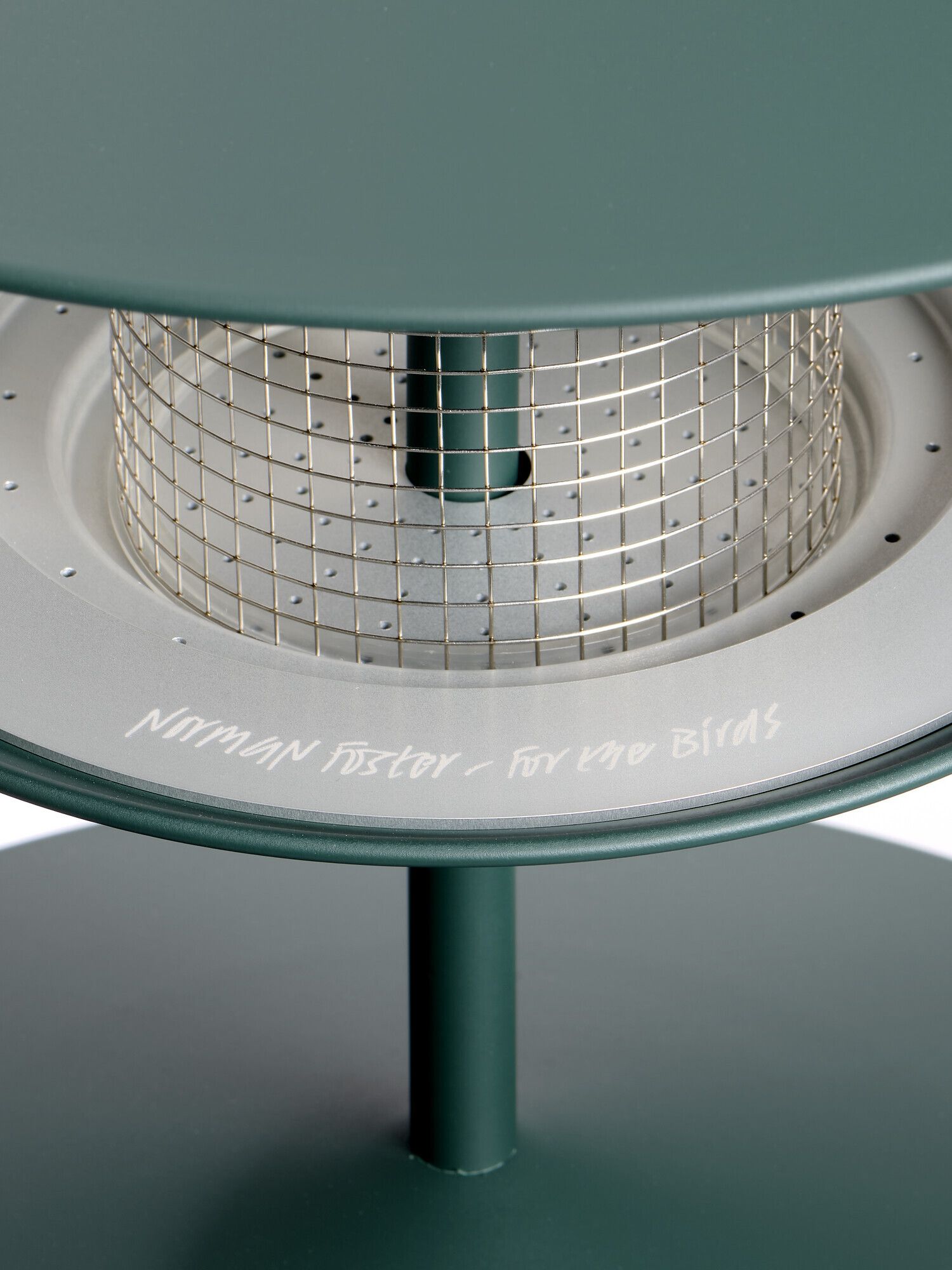
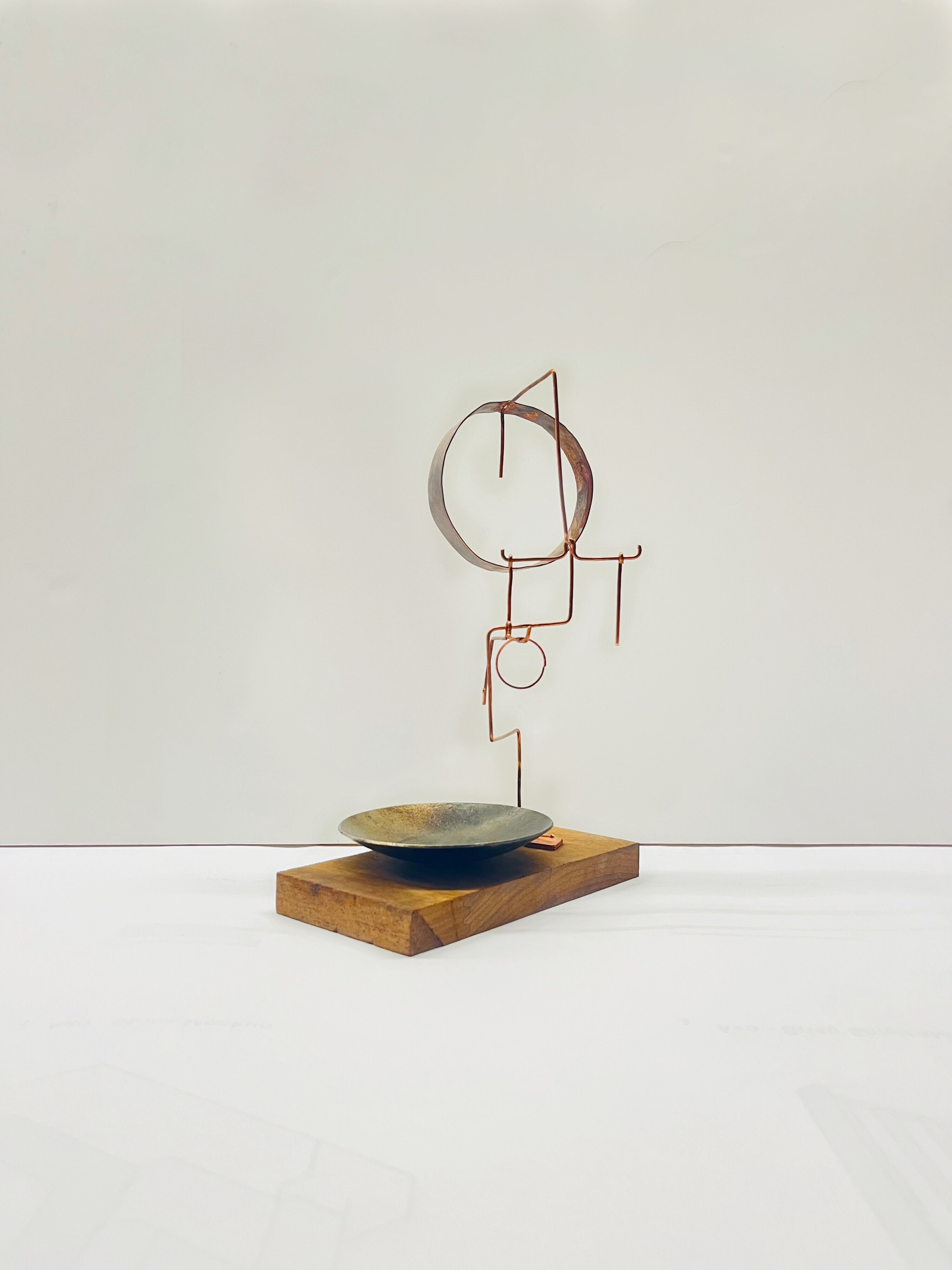
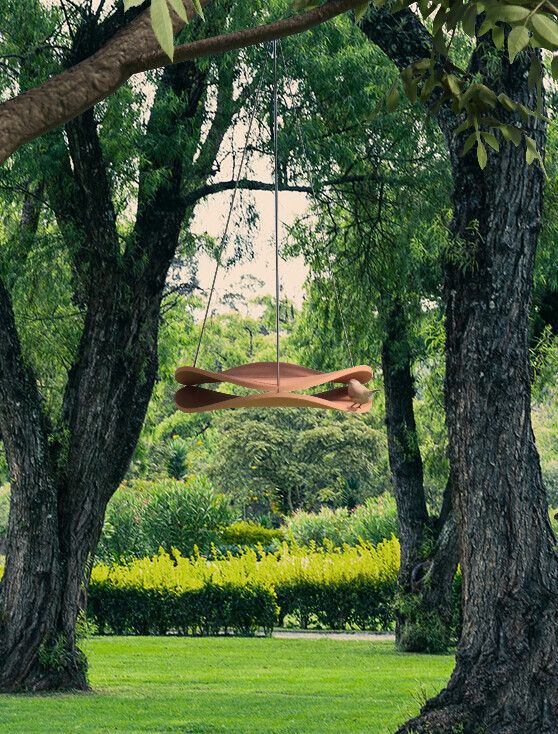
Christie's King Street's latest charity auction and exhibition, Architects for the Birds (October 8-14), whose proceeds aid the Tessa Jowell Foundation's work and research in brain cancer treatment and care across the NHS, put an imaginative spin on a traditionally design-lacking outdoor living element — the birdhouse — with the help of some of today's most innovative minds. Reuniting original designs from architectural legends like Norman Foster, Jacques Herzog, Kazuyo Sejima, Renzo Piano, Lina Ghotmeh, and David Chipperfield, among others, Architects for the Birds looked to the birdhouse as a liminal space between the inside and outdoors.
It did so through a series of sculptural, poetic creations that, inspired by the natural elements and our interaction with them, stood as talismans of redemption, care, and hope — a metaphor between what awaits recovering patients and what came before. Ranging from crafty, tree-like solutions to enigmatic, one-piece reflective surfaces, the pieces didn't simply embody a good cause. They also reignited visitors' connection with the plethora of life forms and sensations that await us all, just steps away from our homes.
Read more about Christie's King Street's Architects for the Birds charity initiative.
Love in the Misanthropocene at Palmer Gallery — Are Projectors the Aesthetic Way Into a Home Cinema Experience?
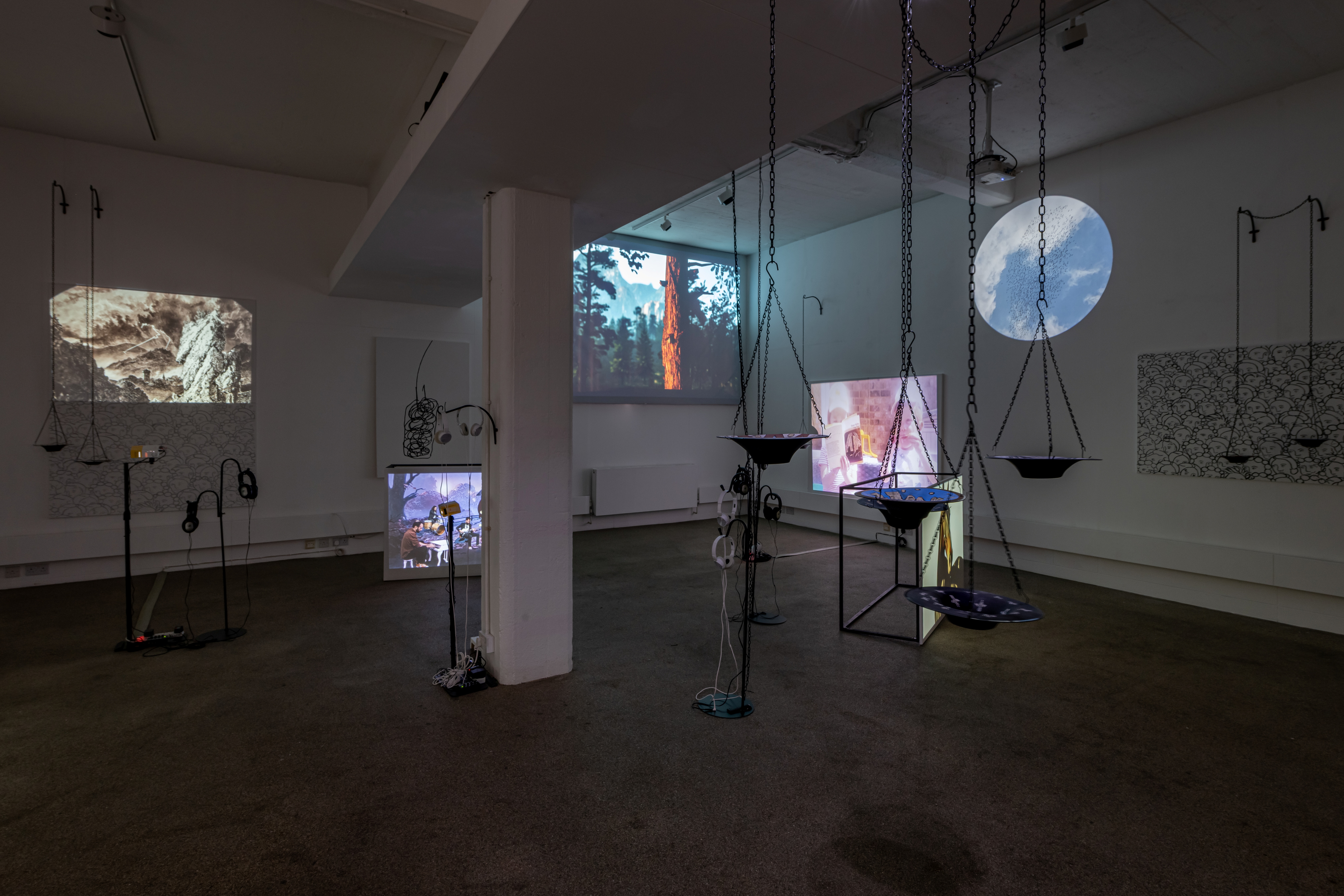
Installation view of Andy Holden & The Grubby Mitts' immersive exhibition "Love in the Misanthropocene", which continues at Palmer Gallery until October 21.
There is a lot to unpack about Love in the Misanthropocene, Andy Holden & The Grubby Mitts' ongoing exhibition at Lucas Giles and Will Hainsworth's thought-provoking West London platform Palmer Gallery, but allow me to say, the first thing that sprang to mind when I visited last Thursday was, simply: God, I could do with a projector. That's not to take away from the content of its multisensory setup — the opposite. If anything, the lo-fi, slightly grainy, retro-fueled feel of the images moving in front of me reminded me just how much cooler watching anything gets when it is not done on a TV. But back to Andy Holden & The Grubby Mitts!
As visitors make their way to the main exhibition room of the former aircraft manufacturing factory, a series of short films and animations appears intermittently on its white-washed walls, interspersed with headphone sets, cartoony painted scenes, quirky, metallic hanging bowls, sculptures, and more. To each screen, or projection, in the installation corresponds a track from Andy Holden & The Grubby Mitts' namesake album — a play on the state of alienation and the antithesis human-nature that characterize life in our digital-saturated times, recorded between 2016 and 2024. Informed, in equal measures, by today's non-stop news flow, current affairs' darkest side, and the influencers and memes-populated social media discourse, Love in the Misanthropocene strikes as a wake-up call. Through humorous lyrics, trippy landscapes, animals, and insects-filled visuals, and a transportative narrative, it playfully challenges our place in — and view of — the world.
This week, more home inspiration comes courtesy of London-based designer and maker James Shaw, whose just-launched collection for cult concept store KOIBIRD shows that there is always an alternative to throwing away materials we don't want. In need of a caffeine fix? Discover our design-conscious selection of must-know coffee shops in London for when you feel like taking a break from the Frieze and PAD London frenzy.
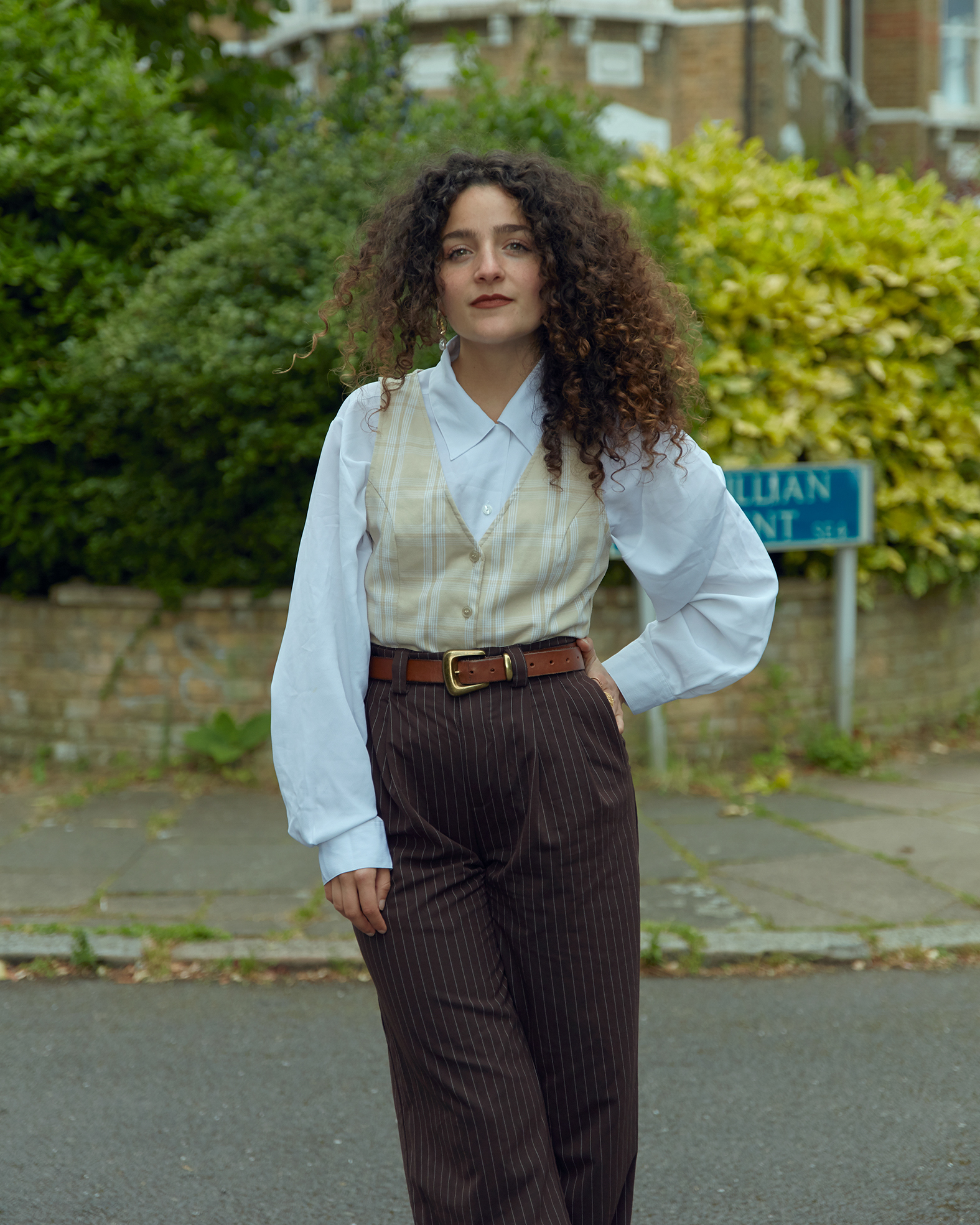
Gilda Bruno is Livingetc's Lifestyle Editor. Before joining the team, she worked as an Editorial Assistant on the print edition of AnOther Magazine and as a freelance Sub-Editor on the Life & Arts desk of the Financial Times. Between 2020 and today, Gilda's arts and culture writing has appeared in a number of books and publications including Apartamento’s Liguria: Recipes & Wanderings Along the Italian Riviera, Sam Wright’s debut monograph The City of the Sun, The British Journal of Photography, DAZED, Document Journal, Elephant, The Face, Family Style, Foam, Il Giornale dell’Arte, HUCK, Hunger, i-D, PAPER, Re-Edition, VICE, Vogue Italia, and WePresent.